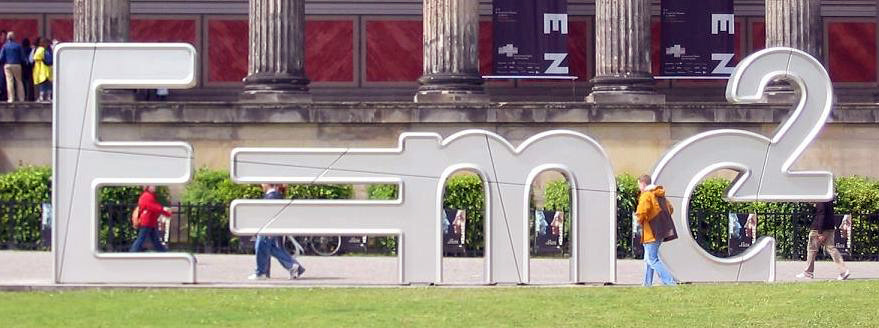
Great ideas have been piling up in history’s graveyard for 3,000 years.
They are left unattended and largely forgotten. When these ideas are first introduced, they are usually met with laudatory excitement and abundant enthusiasm. Then, the ideas are gradually diminished and distorted through this four step process:
- Trivialization
- Bastardization
- Privatization
- Commercialization
Trivialization occurs when the idea is too large for people to comprehend and embrace. In order to make the idea more understandable, it is made smaller, dumbed down, or reduced to a more palatable size.
Bastardization occurs when the idea, already reduced, becomes convoluted by misunderstanding and distortion. In order to make the idea consistent with any given set of biases, inferences, assumptions, or beliefs, the idea gets twisted to support a preferred ideology.
Privatization occurs when someone claims the idea as an original innovation. In order to feed their imagination of creativity and superiority, opportunists take credit for the ideas, already in their reduced form, that rightfully belong to others.
Commercialization occurs when the false owner figures out how to capitalize on the idea and make money. At this point, the idea is packaged, marketed, and sold to satisfy whatever material desires the idea thief has independent of the idea’s initial intent and value.
Two ideas, among thousands, that have been victimized by this historical process are Wellness and Human Capital Development. I will take you through the process below.
Wellness: This great idea started out with the intention of helping people become more balanced, unified, and conscious. It began as an integrated approach to improve health physically, emotionally, intellectually, and spiritually. It proposed a wholistic methodology to health that maximized energy using a play on Einstein’s formula: E = MC2 (Energy = Motivation times Competency Squared). In its comprehensive form, wellness included risk reduction and performance enhancement. The mission of organizational wellness programs was to create an environment that supports positive health practice. The environmental component addressed the norms and values of the workplace as well as management behaviors, because leaders are as likely to create a toxic environment as they are to promote a healthy one.

This idea was quickly trivialized by reducing it to its least potent component: physical health. It became bastardized when charlatans started making false claims about the health benefits of certain vitamin supplements or by guarantees of extended longevity through one practice or another. The idea was rapidly privatized when individuals boasted of new breakthroughs in health and fitness. Finally, companies jumped on the bandwagon and started selling wellness programs that had little or no connection to the original idea.
Human Capital Development: This great idea, originated by Dr. Robert Carkhuff in the early 80s, was initially intended to bolster economic productivity growth by continually generating new sources of gain through mulit-dimensional thinking and organizational processing. It began as an attempt to create an interdependent eco-system of schools, businesses, government agencies, and homes that would elevate the performance and productivity of people around the world.
The idea was quickly trivialized by making it a sub-set of HR departments and by equating it with training and development. It was bastardized by associating the name with personnel administration. Many consulting firms quickly adopted the name and created billion dollar businesses under the umbrella of Human Capital, thus completing the last two steps of the historically ingrained process.
Many organizations now discharge the responsibility for Human Capital development to their HR departments. Talent Management divisions of HR create vision statements proclaiming to develop and free human capital.
Very few of the activities stay connected to the original idea of enabling people to think multi-dimensionally, generate new ideas, and create interdependent networks.
Even Talent Management with its components of attracting, selecting, assessing, developing, deploying, rewarding, and retaining highly valued employees approaches the process in fragmented and sub-optimal ways. There are still very few integrated and optimized talent management systems in organizations today.
I could go through many more examples, but I’m not interested in visiting the graveyard of great ideas that have been reduced to trivialized commercialization. I’m interested not only in re-connecting to great ideas as they were originally conceptualized, but also to protect new ideas that are still in their fragile beginnings. By increasing awareness of this process, I would like to bring back to life some of the best ideas and nurture new ideas. We know that game-changing ideas usually come from the margins whether they are new technologies conceived in a garage or new ideas generated in think tanks. These new ideas creatively destroy the way we perceive the world, see ourselves and envision our own possibilities.
In organizations, this same process applies.
Ideas created at the margins are vulnerable to the pull of “normalization” and are then drawn under the bell curve.
Innovation in organizations faces an uphill battle because of the staid cultures in which they are born.
Cultural immune systems are very good at organ rejection, i.e. killing any idea that threatens the “way things work around here.”
That’s why many organizations have established skunk works and incubators that enable ideas to grow without the threats of trivialization and bastardization.
The good news is that there are ideas emerging right now that could totally change the kind of lives we live and the kind of world we live in. Dr. Robert Carkhuff, one of the most referenced social scientists of the last century, has established The Generativity Solution that demonstrates how human, organizational, and cultural technologies can result in a new platform for civilization. Dr. Artie Egendorf, a Harvard educated, Vietnam Veteran polymath has founded Energy’s Way to enable us to supercharge our very being. Due Quach, a Harvard/Wharton educated, Vietnam boat survivor, has developed a methodology for helping inner city kids build resiliency and Calm Clarity – the name of her new institute. Luke Chan, a qigong master in China is translating the Tao Te Ching (The Way of Life) that was originally written 2,600 years ago by Lao Tsu. He is trying to breathe new life into one of greatest books ever written.
These are all ideas that could make a profound difference in the world if we can protect them from the historical process that typically diminishes or kills them. I’m going to do what I can do to prevent any more great ideas from ending up in the graveyard. What about you?
Also published on Medium.

![The Library of Congress Hughey Gold [child with football]](https://rickbellingham.com/wp-content/uploads/2018/12/hugheygoldfb-2.jpg)

